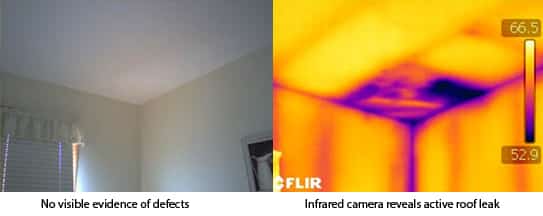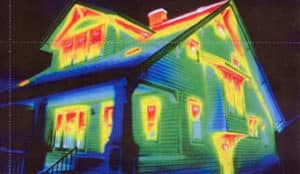This is how our infrared camera measures heat energy. In this example, we are examining the inside of a Colorado Springs home, from the outside.An infrared camera measures heat energy. The technology doesn’t see through walls, does not emit radiation, and isn’t X-ray vision nor night vision. But instead allows the user to examine the heat transfer characteristics of the areas to be inspected.
Using an infrared camera, warmer objects are typically lighter in color (red, orange, yellow, or white). Cooler objects are typically darker in color (green, blue, purple, black). To an untrained eye, a bunch of odd patterns, shapes, and colors on the infrared camera’s screen can easily be confusing or misdiagnosed or the issue may be completed missed. To the properly trained infrared thermographer, these anomalies can be properly identified.
Roof Leaks – Evaporation occurs when a building material gets wet which creates a cooling effect that can be seen with an IR camera.
Water Entry at the Foundation – Water can enter through the foundation, behind siding materials, as well as around doors and windows if not properly sealed and/or flashed.
Missing Insulation – Seeing heat transfer into or out of a building can help determine if there is missing insulation in walls or ceilings. The temperature in the attic of this home is colder compared to the warmer house interior.


